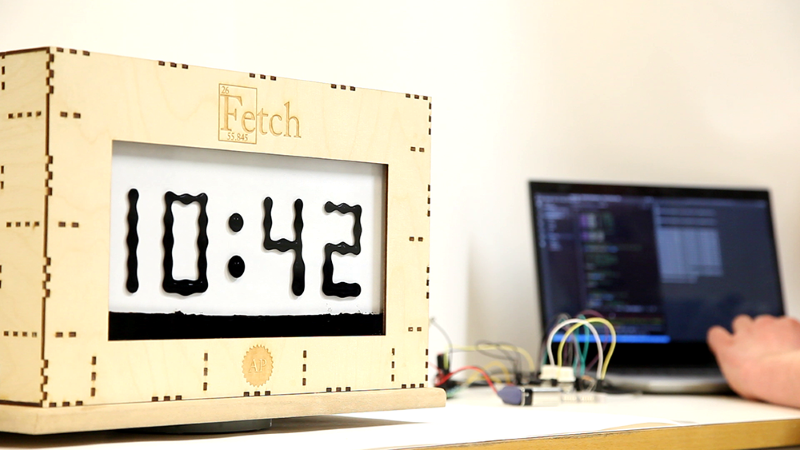We know this project is supposed to be about developing a fine-looking ferrofluid clock, and not about the value of procrastination. But after watching the video below, see if you don’t think that procrastination has taken these two students further than expected.
We first ran into [Simen] and [Amund] several months ago when they launched their ferrofluid project in a fit of “There’s got to be more to life than studying.” It seemed then that building a good-looking, functional ferrofluid display would be a temporary distraction, but the problems posed proved to be far deeper and thornier than either of the electrical engineering students expected. The idea is simple: contain a magnetic fluid between two transparent panels and create pixels using an array of electromagnets to move dots of the fluid around. The implementation, however, was another matter, with the ferrofluid itself proved to be the biggest obstacle. All the formulas they tried seemed to coagulate or degrade over time and tended to stain the glass. While the degradation was never fully sorted, they managed to work around the staining by careful cleaning of the glass and using a saturated brine solution to fill the container.
Backed by 252 electromagnets and drivers on ten custom PCBs, the video below shows the (mostly) finished panel in action as a clock. We’re impressed by the smoothness of the movements of each pixel, even if there’s a bit of drooping at the bottom thanks to gravity. As for the future of the project, that’s unclear since [Simen] is headed off for a NASA internship. We’re not sure if that was despite or because of this procrastination-driven project, but we congratulate him either way and look forward to hearing more from both of them in the future.
















Excellent!
I have been looking for the transparent material in that vial for a year… I recognize that brown-black glass… also there is a “wetting agent” to revive dried ferro fluid, since it dries up pretty quickly. it drove me nuts to think it was probably some common chemical
The only game that needs to be played on this is the original snake game :)
World of goo?
The problem is how would the snake ‘grow’?
Some simplified form of ‘space invaders’ or ‘breaker’ might be a better idea
Pacman? Where he grows the more he eats?
Super-duper expensive build..
I love the overkill, heavy 252 electromagnets and drivers all just to display blobs with ferrofluid. If something is worth doing, it’s worth overdoing! Absolutely wonderful.
I want to see Conrad’s Game of Life on this. Also, “There’s got to be more to life than studying.” sounds like a Weasley twin, right?
Looks amazing!
Been wanting to make a display like this ever since that first ferrofluid clock appeared (that was like $20k or whatever ridiculous number it was) so i’ll definitely be digging trough the project & provided files (even though i likely wont be able to make something of this scale) thanks a lot for making your work open-source guys!
Simply: wow. This is so cool!